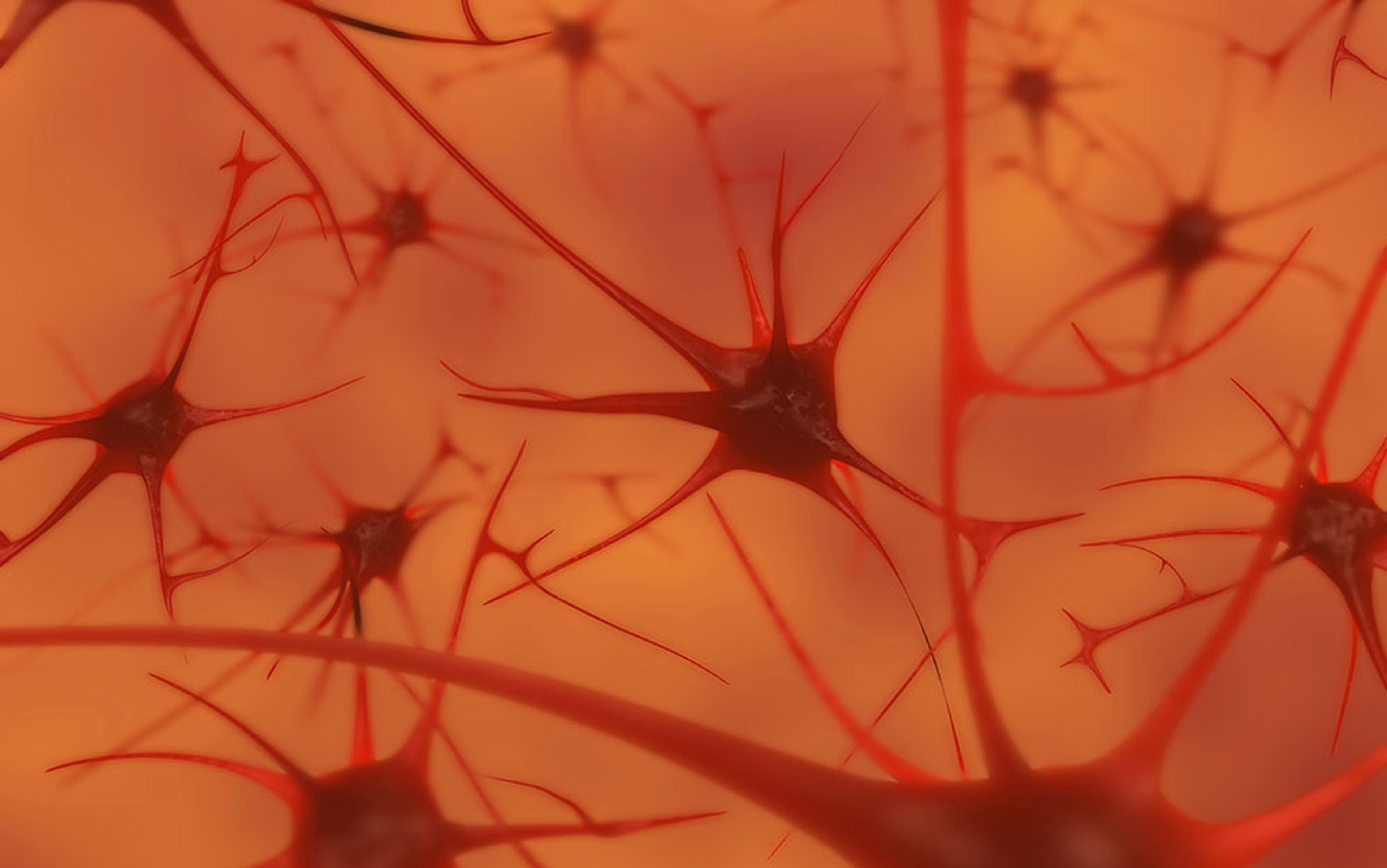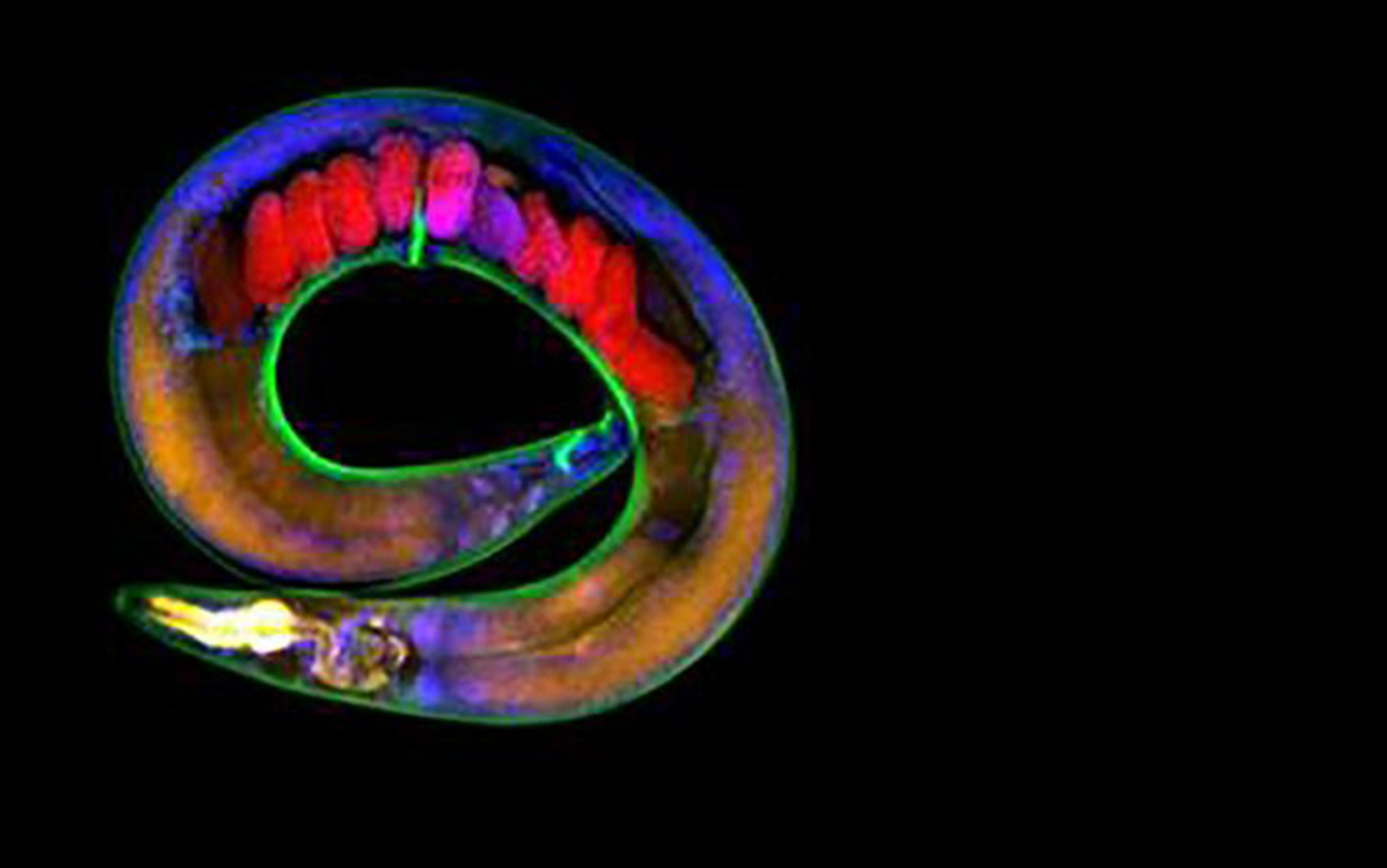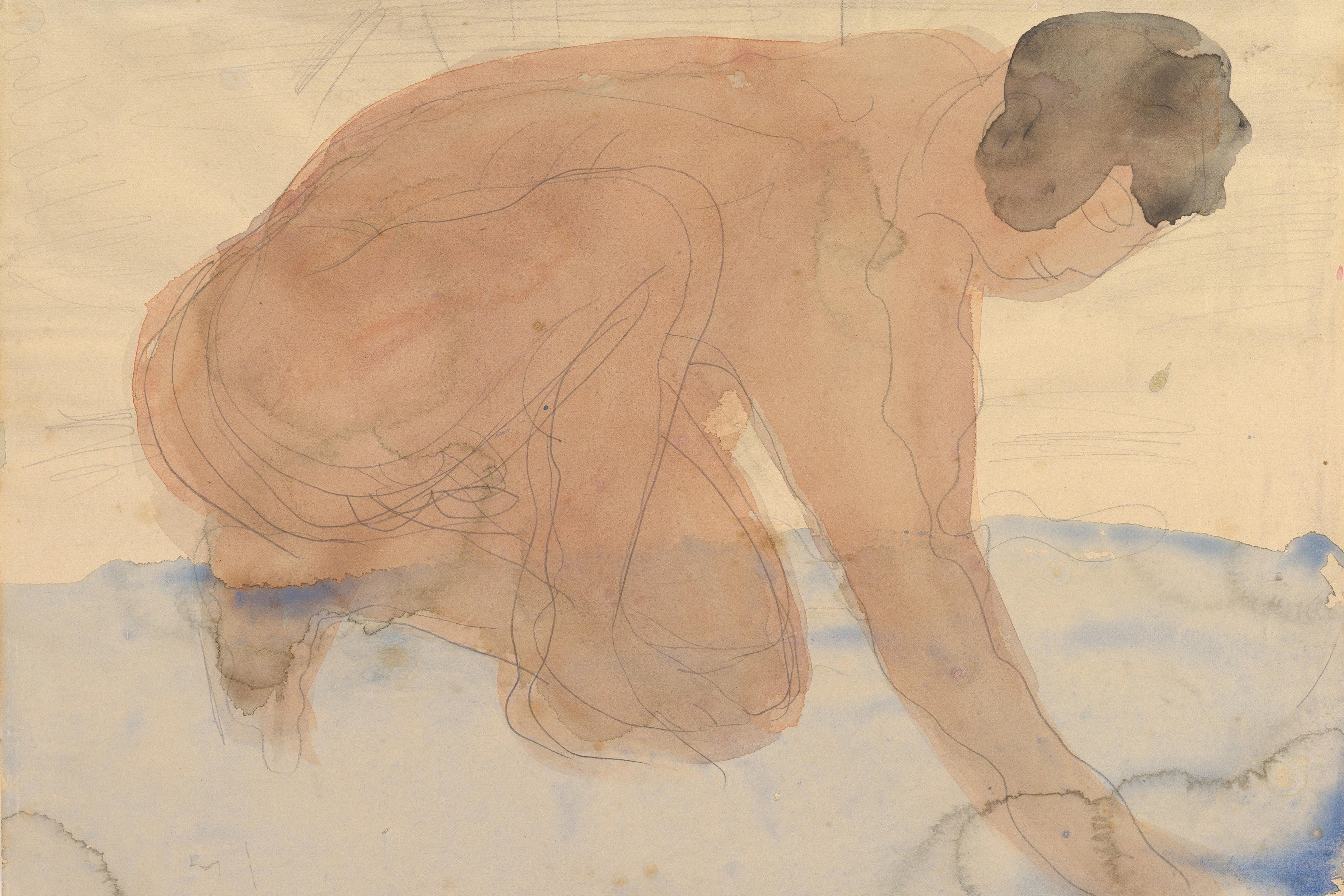More than 2,000 years ago, the semi-mythical father of medicine, Hippocrates of Kos, challenged the spiritualists of his time with a bold claim about the nature of the human mind. In response to supernatural explanations of mental phenomena, Hippocrates insisted that ‘from nothing else but the brain come joys, delights, laughter and sports, and sorrows, griefs, despondency, and lamentations’. In the modern age, Hippocrates’ words have been distilled into a Twitter-friendly pop-neuroscience slogan: ‘We are our brains.’ This message resonates with recent trends to blame criminality on the brain, to redefine mental illness as brain disease and, in futuristic-technological circles, to imagine enhancing or preserving our lives by enhancing or preserving our brains. From creativity to drug addiction, there is barely an aspect of human behaviour that has not been attributed to brain function. To many people today, the brain seems like a contemporary surrogate for the soul.
But lost in the public’s romance with the brain is the most fundamental lesson neuroscience has to teach us: that the organ of our minds is a purely physical entity, conceptually and causally embedded in the natural world. Although the brain is required for almost everything we do, it never works alone. Instead, its function is inextricably linked to the body and to the environment around it. The interdependence of these factors is masked however by a cultural phenomenon I call the ‘cerebral mystique’ – a pervasive idealisation of the brain and its singular importance, which protects traditional conceptions about differences between mind and body, the freedom of will and the nature of thought itself.
The mystique is expressed in multiple forms, ranging from ubiquitous depictions of supernatural, ultra-sophisticated brains in science fiction and the popular media to more sober, scientifically supported conceptions of cognitive function that emphasise inorganic qualities or confine mental processes to neural structures. This idealisation is almost reflexively adopted by laypeople and scientists alike (including me!) and it is compatible with both materialist and spiritual world views. The cerebral mystique might help to increase enthusiasm for neuroscience – a valued consequence – but it drastically limits our ability to analyse human behaviour and address important social problems.
The widespread analogy of the brain to a computer contributes powerfully to the cerebral mystique by distancing the brain from the rest of the biology. The contrast between a machine-like brain and the wet, chaotic mess we have throughout the rest of our bodies sets up a brain-body distinction that parallels the historical mind-body distinction drawn by early philosophers such as René Descartes. In keeping with Western religious notions of the soul, Descartes in the 17th century postulated that the mind is an ethereal entity that interacts with the body but does not join with it. With his timeless axiom ‘I think, therefore I am’ Descartes placed the mind in its own universe, autonomous of the material world.
To the extent that the brain resembles a machine, we can more easily imagine removing it from our heads, preserving it for eternity, cloning it or sending it through space. The digital brain thus seems separable from the body in both its substance and causal relations, much like Descartes’s detached spirit. It might be no accident that some of the most influential inorganic analogies to the brain were introduced by physical scientists who in their later years took to the problem of consciousness in the way that elderly people sometimes take to religion. John von Neumann, the computer pioneer, was the best-known of these; he wrote the influential book The Computer and the Brain (1958) shortly before his death in 1957, inaugurating this enduring analogy at the very dawn of the digital age.
Brains are undoubtedly somewhat computer-like – computers, after all, were invented to perform brain-like functions – but brains are also much more than bundles of wiry neurons and the electrical impulses they are famous for propagating. The function of each neuroelectrical signal is to release a little flood of chemicals that helps to stimulate or suppress brain cells, in much the way that chemicals activate or suppress functions such as glucose production by liver cells or immune responses by white blood cells. Even the brain’s electrical signals themselves are the products of chemicals called ions that move in and out of cells, causing tiny ripples that can spread independently of neurons.
Also distinct from neurons are the relatively passive brain cells called glia (Greek for glue) that are roughly equal in number to the neurons but do not conduct electrical signals in the same way. Recent experiments in mice have shown that manipulating these uncharismatic cells can produce dramatic effects on behaviour. In one experiment, a research group in Japan showed that direct stimulation of glia in a brain region called the cerebellum could cause a behavioural response analogous to changes more commonly evoked by stimulation of neurons. Another remarkable study showed that transplantation of human glial cells into mouse brains boosted the animals’ performance in learning tests, again demonstrating the importance of glia in shaping brain function. Chemicals and glue are as integral to brain function as wiring and electricity. With these moist elements factored in, the brain seems much more like an organic part of the body than the idealised prosthetic many people imagine.
Stereotypes about brain complexity also contribute to the mystique of the brain and its distinction from the body. It has become a cliché to refer to the brain as ‘the most complex thing in the known Universe’. This saying is inspired by the finding that human brains contain something on the order of 100,000,000,000 neurons, each of which makes about 10,000 connections (synapses) to other neurons. The daunting nature of such numbers provides cover for people who argue that neuroscience will never decipher consciousness, or that free will lurks somehow among the billions and billions.
Crows’ brains are less than 1 per cent the size of humans’ but perform feats of cognition comparable to gorillas
But the sheer number of cells in the human brain is unlikely to explain its extraordinary capabilities. Human livers have roughly the same number of cells as brains, but certainly don’t generate the same results. Brains themselves vary in size over a considerable range – by around 50 per cent in mass and likely number of brain cells. Radical removal of half of the brain is sometimes performed as a treatment for epilepsy in children. Commenting on a cohort of more than 50 patients who underwent this procedure, a team at Johns Hopkins in Baltimore wrote that they were ‘awed by the apparent retention of memory after removal of half of the brain, either half, and by the retention of the child’s personality and sense of humour’. Clearly not every brain cell is sacred.
If one looks out into the animal kingdom, vast ranges in brain size fail to correlate with apparent cognitive power at all. Some of the most perspicacious animals are the corvids – crows, ravens, and rooks – which have brains less than 1 per cent the size of a human brain, but still perform feats of cognition comparable to chimpanzees and gorillas. Behavioural studies have shown that these birds can make and use tools, and recognise people on the street, feats that even many primates are not known to achieve. Within individual orders, animals with similar characteristics also display huge differences in brain size. Among rodents, for instance, we can find the 80-gram capybara brain with 1.6 billion neurons and the 0.3-gram pygmy mouse brain with probably fewer than 60 million neurons. Despite a greater than 100-fold difference in brain size, these species live in similar habitats, display similarly social lifestyles, and do not display obvious differences in intelligence. Although neuroscience is only beginning to parse brain function even in small animals, such reference points show that it is mistaken to mystify the brain because of its sheer number of components.
Playing up the machine-like qualities of the brain or its unbelievable complexity distances it from the rest of the biological world in terms of its composition. But a related form of brain-body distinction exaggerates how the brain stands apart in terms of its autonomy from body and environment. This flavour of dualism contributes to the cerebral mystique by enhancing the brain’s reputation as a control centre, receptive to bodily and environmental input but still in charge.
Contrary to this idea, our brains themselves are perpetually influenced by torrents of sensory input. The environment shoots many megabytes of sensory data into the brain every second, enough information to disable many computers. The brain has no firewall against this onslaught. Brain-imaging studies show that even subtle sensory stimuli influence regions of the brain, ranging from low-level sensory regions where input enters the brain to parts of the frontal lobe, the high-level brain area that is expanded in humans compared with many other primates.
Many of these stimuli seem to take direct control of us. For instance, when we view illustrations, visual features often seem to grab our eyes and steer our gaze around in spatial patterns that are largely reproducible from person to person. If we see a face, our focus darts reflexively among eyes, nose and mouth, subconsciously taking in key features. When we walk down the street, our minds are similarly manipulated by stimuli in the surroundings – the honk of a car’s horn, the flashing of a neon light, the smell of pizza – each of which guides our thoughts and actions even if we don’t realise that anything has happened.
Signals from within the body influence behaviour just as powerfully as influences from the environment
Even further below our radar are environmental features that act on a slower timescale to influence our mood and emotions. Seasonal low light levels are famous for their correlation with depression, a phenomenon first described by the South African physician Norman Rosenthal soon after he moved from sunny Johannesburg to the grey northeastern United States in the 1970s. Colours in our surroundings also affect us. Although the idea that colours have psychic power evokes New Age mysticism, careful experiments have repeatedly linked cold colours such as blue and green to positive emotional responses, and hot red hues to negative responses. In one example, researchers showed that participants performed worse on IQ tests labelled with red marks than on tests labelled with green or grey; another study found that subjects performed better on computerised creativity tests delivered on a blue background than on a red background.
Signals from within the body influence behaviour just as powerfully as influences from the environment, again usurping the brain’s command and challenging idealised conceptions of its supremacy. A particularly powerful pathway for reciprocal brain-body interactions is the so-called hypothalamic-pituitary-adrenal (HPA) axis, named for a set of structures both inside and outside the brain that together coordinate the storied fight-or-flight response. Activation of the HPA axis is often triggered by fear-related brain signals that lead to secretion of cortisol and adrenalin from a gland that sits on top of the kidneys. These hormones lead to a range of bodily changes that affect breathing, heartrate, sensory acuity and many other variables, providing feedback to the brain and closing a circuit of mutual brain-body interaction. In some cases, the HPA axis can be engaged from outside the brain, as in pregnancy, when a surge of cortisol originates on its own from the placenta.
The HPA axis provides one of the routes by which our emotional states more generally are coupled to body-wide changes that extend far beyond the brain. Monitoring of externally observable physiological parameters such as skin conductance and respiration has long supported the idea that various emotions produce distinct responses relevant to how emotions are perceived. In a 2014 study, a group of researchers led by Lauri Nummenmaa at Aalto University in Finland asked participants to describe bodily sensations that they associate with 14 distinct emotions. The result was a stunning set of ‘bodily maps’ of the emotions, revealing variegated patterns of increased and decreased sensitivity associated with feelings of anger, fear, happiness, depression, love and so on. The subjects’ ability to report their sensations emphasises that bodily changes are part of how the emotions are experienced, and not just passive, downstream consequences of emotion-related brain activity.
An amazing finding of recent years is the fact that microbes living in the intestines are also part of the physiological network that determines our emotions. Changing the gut microbial population by eating bacteria-rich foods or undergoing an off-putting procedure called a faecal transplant can alter characteristics such as anxiety and aggression. A key experiment was performed in mice, where a two-way exchange of gut microbes between the normally shy BALB/c mouse strain and the more outgoing NIH Swiss strain was enough to flip the two personalities. In human organ-transplant patients, both cognitive and emotional effects are also commonplace. Some of these have to do with correcting the medical condition that required the transplant in the first place. For instance, liver or kidney failure causes a buildup of toxins such as ammonia in the blood; this in turn causes cognitive difficulties that can be corrected by replacing the diseased organ. But even procedures such as stomach stitching, which does not cure a disease, are said to cause personality shifts in about 50 per cent of patients.
Such examples illustrate the extent to which what happens in the brain is interwoven with what goes on in the body and the environment. There is no causal or conceptual boundary between the brain and its surroundings. Aspects of the cerebral mystique – idealised views of the brain as inorganic, hypercomplex, self-contained and autonomous – fail when we look more closely at what the brain is made of and how it operates. The integrated involvement of brain, body and environment is precisely what makes having a biological mind different from having a soul, and the implications of this difference are tremendous.
Most importantly, the cerebral mystique fosters a misleading sense that the brain is the prime mover of our thoughts and actions. As we seek to understand human conduct, the mystique prompts us to think first of brain-related causes, and pay less attention to factors outside the head. This leads us to overemphasise the role of individuals and underemphasise the role of contexts across a range of cultural phenomena.
In the arena of criminal justice, for instance, some writers suggest that the perpetrator’s brain should be blamed for transgressions. This argument often invokes the case of Charles Whitman, who in 1966 committed one of the first mass shootings in the US, at the University of Texas. Whitman had reported psychological disturbances in the months leading up to the crime, and an autopsy later revealed that a large tumour had been growing near a part of his brain called the amygdala, which is involved in stress and emotional regulation. But although advocates of blaming the brain would argue that Whitman’s brain tumour might have caused his crime, the larger reality is that Whitman’s act occurred against a background of many other predisposing factors: growing up with a violent father, the recent divorce of his parents, Whitman’s repeated career rejection and court martial from the army, his substance abuse, great physical stature, and access to high-powered weaponry. Even the high temperature on the day of the crime – 99 degrees Fahrenheit (37 degrees Celsius) – might have contributed to Whitman’s aggressive behaviour on the fateful day.
Blaming the brain for criminal behaviour offers an escape from outmoded principles of morality and retribution, but it still neglects the extended network of influences likely to contribute to any given situation. In the current discussion about the causes of violence in the US, it is more important than ever to maintain a broad view of how multiple factors work together in and around each individual; mental problems, gun access, media influences and social alienation can all play their parts. In other contexts, we miss analogous factors when we attribute drug addiction or adolescent misbehaviour to the brain, or when we credit the brain for creativity and intelligence. In each case, an idealised view that simply locates good and bad personal qualities in the brain is remarkably similar to old-fashioned perspectives that assigned virtue and vice to the metaphysical soul. An updated view should instead accept that any act of brilliance or depravity arises from a combination of brain, body and environment working together.
Heart, lung and endocrine problems all have cognitive side effects
The cerebral mystique has particular significance for the way that our society grapples with the problem of mental illness. This is because of the widespread drive to redefine mental illnesses as brain disorders. Proponents argue that doing this places psychological problems in the same category as influenza or cancer – sicknesses that don’t evoke the social stigma commonly associated with psychiatric disorders. There is some evidence that using the language of brain disorders in fact lowers the barrier for mental-health patients to seek treatment, an important benefit.
In other respects, however, reclassifying mental illnesses as brain disorders can be highly problematic. For patients, attributing mental problems to intrinsic neurological defects incurs a stigma of its own. Although people with ‘broken brains’ might not be held morally accountable or told to ‘just get over it’, the sense that they are irredeemably flawed can be just as damaging. Biological flaws can be harder to fix than moral lapses, and people with brain dysfunction can be seen as dangerous or even less than fully human. This attitude reached extremes under the Nazis, who murdered thousands of mental-health patients as part of their ‘euthanasia’ programme during the Second World War, but it persists in more subtle forms today. A large analysis of changing attitudes to mental illness in 2012 found that there was no increase in social acceptance of patients with depression or schizophrenia, despite increasing awareness of neurobiological contributions to these conditions.
Regardless of its social implications, blaming the brain for mental illnesses might be scientifically inaccurate in many cases. Although all mental problems involve the brain, the underlying causal factors can be elsewhere. In the 19th century, the sexually transmitted bacterial disease syphilis and the vitamin-B deficiency pellagra were among the greatest contributors to insane-asylum populations in Europe and the US. A more recent study estimated that as many as 20 per cent of psychiatric patients have a bodily disorder that might be producing or worsening their mental condition; the maladies include heart, lung and endocrine problems, all of which have cognitive side effects. Epidemiological surveys have found remarkable correlations between incidence of mental illness and factors such as ethnic minority status, being born in a city, and being born at certain times of year. Although these correlations are not well-explained, they emphasise the likely role of environmental factors well beyond the brain in bringing about psychiatric problems. We must be sensitive to such factors if we want effective treatment and prevention of mental disorders.
At an even deeper level, cultural conventions circumscribe the notion of mental illness in the first place. Just 50 years ago, homosexuality was classified as a pathology in the American Psychiatric Association’s authoritative compendium of mental disorders. In Soviet Russia, political dissidents were sometimes confined on the basis of psychiatric diagnoses that would horrify most observers today. Nevertheless, sexual preference or failure to bow to authority in pursuit of a righteous cause are both psychological traits for which we could imagine finding biological correlates. That does not mean that homosexuality and political dissidence are brain diseases. Society rather than neurobiology ultimately defines the bounds of normality that determine mental-health categories.
The cerebral mystique exaggerates the brain’s contribution to human behaviour, and for some it also prompts remarkable visions of the brain’s role in the future of humanity itself. In technophilic circles, there is increasing talk of ‘hacking the brain’ to improve human cognition. This notion evokes the kind of sophisticated but semi-subversive intervention one might make into a fancy smartphone or a government server, but the reality is usually more like the type of hacking one would perform with a machete. Some of the earliest brain hacks involved the purposeful destruction of parts of the brain, famously as part of the now-extinct psychosurgery procedures that inspired Ken Kesey’s novel One Flew Over the Cuckoo’s Nest (1962). The most advanced of today’s brain hacks involve surgically implanting electrodes for direct stimulation or recording of brain tissue. These interventions can restore basic function to patients with severe movement disorders or paralysis – an incredibly impressive feat, but still a world away from enhancements to normal abilities. This distance has not stopped entrepreneurs such as Elon Musk or the US defence agency DARPA from investing heavily in technology that they hope will one day routinely hardwire healthy human brains to computers.
But this exuberance is largely the product of an artificial distinction between what goes on inside versus outside the brain. The philosopher Nick Bostrom of the Future of Humanity Institute in Oxford points out that ‘most of the benefits you could imagine achieving through [brain implants] you could achieve by having the same device outside of you, and then using your natural interfaces like your eyeballs, which can project 100 million bits per second straight into your brain’. Indeed, most of us are familiar with the kind of cognitive-enhancement aids that live in our desks, pockets and handbags, boosting our memory and communication capabilities without touching a neuron. It is debatable whether connecting smartphone-like devices more directly to brains would add much except annoyance and distraction.
The more we feel that our brains encapsulate our essence, the less sensitive we’ll be to the role of environment
In the medical realm, early efforts to restore vision in blind people using brain implants quickly gave way to much less invasive approaches involving retinal prostheses, which leverage the body’s natural physiology for early processing of visual information. Cochlear implants that restore hearing in deaf patients rely on the similar strategy of interfacing with the auditory nerve in the ear, rather than the brain itself. Except in the most impaired patients, prostheses for restoring or enhancing movement also benefit from interfaces to the body. To give amputees control over mechanised artificial limbs, a technique called ‘targeted muscle reinnervation’ allows physicians to connect loose peripheral nerves from the missing original limb to new muscle groups that in turn communicate with the device. For enhancing motor function in healthy people, powered exoskeletons developed by companies such as Cyberdyne in Japan communicate with the wearer through skin-surface electrodes, also accepting input from the brain through indirect but evolutionarily honed channels. In each of these examples, the brain’s natural interactions with the body help the person use the prosthetic, leveraging rather than denying the continuity between brain and body.
The most extreme direction in futuristic brain technology is the drive to achieve immortality through the postmortem preservation of human brains. Two companies now offer to extract and preserve the brains of dying ‘clients’, who do not wish to go gentle into the good night. The organs will be stored in liquid nitrogen until technology advances to the point (now nowhere in sight) where the brain can be restored to function in some form or analysed in sufficient detail to ‘upload’ the mind into a computer. This venture takes the cerebral mystique to its logical endpoint, fully embracing the fallacy that human life is reducible to brain function and that the brain is just a physical embodiment of the soul.
Although seeking immortality through brain preservation does little harm to anything other than a few people’s bank accounts, this fringe pursuit also epitomises why demystifying the brain is so important. The more we feel that our brains encapsulate our essence as individuals, and the more we believe that our thoughts and actions simply emanate from the bundle of flesh in our heads, the less sensitive we will be to the role of the society and environment around us, and the less we will do to nurture our shared culture and resources – whether in the context of criminal behaviour, creativity, mental illness or any other aspect of human life.
The brain is special because it does not distil us to an essence, it unites us to our surroundings in a way a soul never could. If we value our own experiences, we must protect and strengthen the many factors that enrich our lives from both inside and outside, so that as many people as possible can benefit from them now and in the time to come. We must realise that we are much more than our brains.






